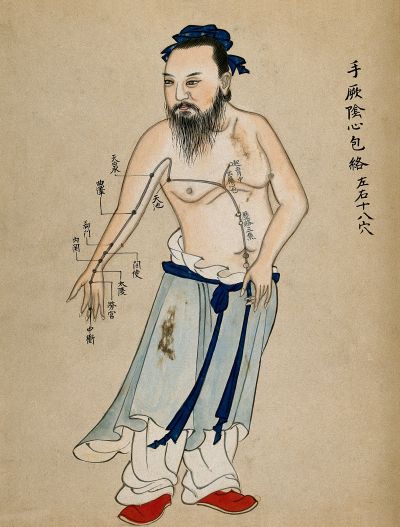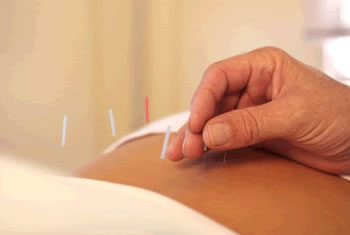Reflexotherapy (acupuncture)
What is Acupuncture and Related Therapies?
Acupuncture is a key component of Traditional Chinese Medicine (TCM) involving the insertion of very thin, sterile needles into specific points on the body known as acupoints (1, 2). It has been practiced for millennia, originally based on theories of balancing vital energy (Qi) flowing through pathways called meridians.
The term Reflexotherapy is sometimes used more broadly to encompass techniques that stimulate specific points or zones on the body to elicit a therapeutic response, which can include acupuncture, acupressure (applying pressure instead of needles), and other methods (3). It often emphasizes neurological reflex mechanisms.
Modern practice often integrates traditional concepts with contemporary understanding of anatomy, physiology, and pain mechanisms (1).
Other related techniques include:
- Electroacupuncture: Applying a small electrical current to needles after insertion.
- Laser Acupuncture: Using low-level lasers to stimulate acupoints instead of needles.
- Moxibustion: Burning dried mugwort (moxa) on or near the skin at acupoints.
- Acupressure: Applying manual pressure to acupoints.
Theoretical Mechanisms
How acupuncture and related therapies may work is explained differently by traditional and modern perspectives:
- Traditional Chinese Medicine (TCM): Posits that stimulating acupoints corrects imbalances in the flow of Qi (vital energy) through meridians, restoring health (1, 2).
- Western Medical Perspective: Research suggests potential mechanisms include stimulating nerves, muscles, and connective tissue. This stimulation may trigger the release of endorphins (natural pain relievers) and other neurochemicals, modulate pain signals in the central nervous system (e.g., via gate control theory or descending inhibition), affect neurotransmitter levels (like serotonin), influence blood flow locally, and modulate immune responses (1, 4, 5). The concept of reflex responses via the nervous system is central to the term "reflexotherapy."
It's important to note that the exact mechanisms are complex and not fully elucidated by current scientific models for all purported effects.
Common Techniques
The core technique involves inserting sterile, single-use, fine needles into specific acupoints. The depth of insertion varies. Needles may be left in place for a period (typically 15-30 minutes) and sometimes manually stimulated or connected to an electrical stimulator (electroacupuncture) (1).
Indications (Conditions Commonly Treated)
Acupuncture and related therapies are used for a wide range of conditions, often as complementary treatments alongside conventional care. Indications where acupuncture is frequently considered include (1, 6, 7):
- Pain Management:
- Chronic Low Back Pain
- Neck Pain
- Osteoarthritis (especially knee)
- Headaches (tension-type and migraine prevention)
- Shoulder Pain
- Fibromyalgia
- Postoperative Pain
- Dental Pain
- Nausea and Vomiting:
- Chemotherapy-induced nausea and vomiting
- Postoperative nausea and vomiting
- Morning sickness during pregnancy
- Neurological Symptoms: Sometimes used adjunctively for symptoms related to peripheral neuropathy, Bell's palsy (facial nerve paralysis), stroke rehabilitation (spasticity, pain), trigeminal neuralgia.
- Other Conditions: Allergic rhinitis, anxiety, depression, insomnia, infertility support, addiction withdrawal support (evidence levels vary significantly).
Practitioners believe that by influencing nerve pathways and local tissue environments, these therapies can help manage pain intensity, improve circulation, reduce muscle spasm, and potentially aid nerve function recovery where applicable (4, 5).
Scientific Perspective and Evidence
The effectiveness of acupuncture is a subject of ongoing research and debate (1, 6, 7, 8).
- Evidence Strength: There is reasonably good evidence supporting acupuncture's effectiveness for certain types of chronic pain (e.g., low back pain, knee osteoarthritis, chronic headache/migraine prevention) and for postoperative/chemotherapy-induced nausea and vomiting (1, 6, 7).
- Limited/Inconclusive Evidence: For many other conditions, the evidence is limited, inconsistent, or inconclusive due to challenges in conducting high-quality research (e.g., difficulty in designing adequate placebos/sham controls, variability in treatment protocols) (1, 8).
- Placebo Effect: A significant portion of acupuncture's perceived benefit, particularly for subjective symptoms like pain, may be attributable to placebo effects, patient expectations, and the therapeutic interaction (1, 8).
- Mechanism Debate: While physiological effects (like endorphin release) are measurable, it's debated whether these fully explain the clinical outcomes or if they are sufficient to produce effects beyond placebo for many conditions (1, 5).
Many conventional medical guidelines recommend acupuncture as a potential treatment option for specific conditions, particularly chronic low back pain, often after or alongside other evidence-based therapies (6).
Safety and Considerations
When performed by a qualified and trained practitioner using sterile, single-use needles, acupuncture is generally considered safe (1, 9).
- Common Side Effects: Minor bleeding or bruising at needle sites, temporary soreness, mild dizziness or lightheadedness (1).
- Rare but Serious Risks: Include infection (if non-sterile needles are used), nerve injury, organ puncture (e.g., pneumothorax if needles are inserted deeply near the lungs - very rare with proper technique) (1, 9).
- Contraindications/Precautions:
- Bleeding disorders or use of anticoagulants (requires caution).
- Pacemaker (avoid electroacupuncture near the device).
- Pregnancy (avoid certain points).
- Needle phobia.
- Infection at the site of needle insertion.
- Practitioner Qualifications: It is important to seek treatment from a licensed or certified acupuncturist who adheres to proper safety protocols.
Differential Diagnosis
Symptoms often treated with acupuncture (like pain or numbness) require proper medical diagnosis first to rule out serious underlying conditions:
| Presenting Symptom | Potential Differential Diagnoses Requiring Medical Evaluation |
|---|---|
| Low Back Pain / Sciatica | Disc Herniation with significant nerve compression, Cauda Equina Syndrome, Spinal Stenosis, Spondylolisthesis, Infection, Tumor, Fracture, Inflammatory Spondyloarthropathy. |
| Neck Pain | Cervical Myelopathy, Significant Radiculopathy, Instability, Infection, Tumor, Fracture, Inflammatory Arthritis, Vascular Issues (dissection). |
| Headache | Meningitis, Subarachnoid Hemorrhage, Brain Tumor, Giant Cell Arteritis, Stroke, Acute Glaucoma. |
| Joint Pain | Septic Arthritis, Gout/Pseudogout flare, Fracture, Significant Ligament/Meniscus Tear, Inflammatory Arthritis (RA, PsA flare), Lyme Disease. |
| Numbness / Weakness | Stroke, Spinal Cord Injury/Compression, Significant Peripheral Nerve Compression/Injury, Multiple Sclerosis, Guillain-Barré Syndrome. |
Acupuncture should complement, not replace, necessary conventional medical diagnosis and treatment for underlying pathology.
References
- National Center for Complementary and Integrative Health (NCCIH). Acupuncture: In Depth. Updated November 2023. Available from: https://www.nccih.nih.gov/health/acupuncture-in-depth
- Kaptchuk TJ. Acupuncture: theory, efficacy, and practice. Ann Intern Med. 2002;136(5):374-383. doi:10.7326/0003-4819-136-5-200203050-00010
- Stux G, Pomeranz B. Basics of Acupuncture. 5th ed. Springer; 2003. (Textbook covering acupuncture and related concepts)
- Zhao ZQ. Neural mechanism underlying acupuncture analgesia. Prog Neurobiol. 2008;85(4):355-375. doi:10.1016/j.pneurobio.2008.05.004 (Review of proposed mechanisms)
- Lundeberg T, Lund I, Näslund J. Acupuncture--self-education and research. Forsch Komplementarmed Klass Naturheilkd. 2001;8(3):153-158. doi:10.1159/000057225 (Discusses physiological effects)
- Vickers AJ, Vertosick EA, Lewith G, et al. Acupuncture for Chronic Pain: Update of an Individual Patient Data Meta-Analysis. J Pain. 2018;19(5):455-474. doi:10.1016/j.jpain.2017.11.005
- World Health Organization (WHO). Acupuncture: Review and Analysis of Reports on Controlled Clinical Trials. Geneva: WHO; 2003. Available from: https://iris.who.int/handle/10665/42414 (Older but comprehensive review of indications)
- Madsen MV, Gøtzsche PC, Hróbjartsson A. Acupuncture treatment for pain: systematic review of randomised clinical trials with acupuncture, placebo acupuncture, and no acupuncture groups. BMJ. 2009;338:a3115. doi:10.1136/bmj.a3115 (Discusses evidence and placebo)
- White A. A cumulative review of the range and incidence of significant adverse events associated with acupuncture. Acupunct Med. 2004;22(3):122-133. doi:10.1136/aim.22.3.122





